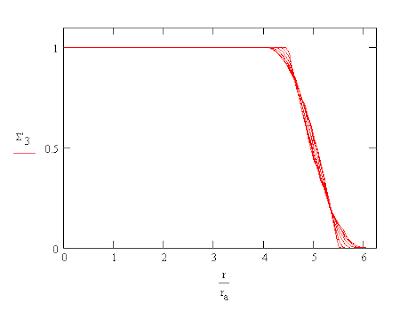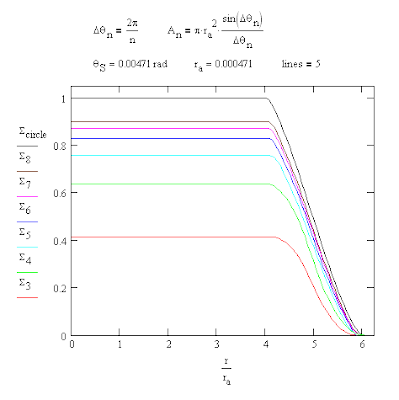
To simplify form of I(r,θ) the n-gon was divided up into n-1 triangles designated by k1. The entire area of the polygon is the sum, Σ, of n-1 such integrals. This allows one to compute a set of radial curves for various values of θ. One such set for an inscribed triangle is shown below with θ varying from 0° to 90°. The curves are constant when the projection is near the center of the disk but as one crosses its edges fewer points contribute and the curve is sloped as a result. As the number of sides in the aperture increases the resulting curves converge to those of a the circle.

One can also compare the illumination from a number of n-gons inscribed in a circle of radius ra. In each case the integral for the aperture was divided by the area of the circle which is also found in the formula for the area of the inscribed n-gon, An.

The maximum heights of the n-gon integral curves are in agreement with sin(Δθn)/Δθn. The total area under each of the integral curves is that of the n-gon used for the aperture. Note also that the width of the sloping sides of the illuminated image is equal to the width of the aperture or, in other words, the width of a "line."
2 comments:
Nice blog and I want to give simple and easy definition of regular polygon,A regular polygon has all angles equal and also all sides are equal this will make a regular polygon and if these condition are not satisfied then its an irregular polygon.
Regular Polygon Definition
The information which you have provided about illuminance of polygon is very helpful.The calculation of area of plane figure like polygon is very easy and it can be done by simple formulas.
Area of a Sector
Post a Comment